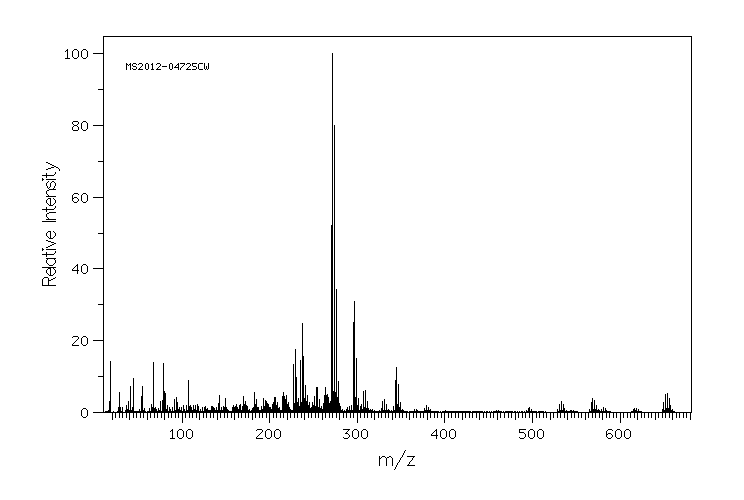毒理性
识别与使用:德克隆(Dechlorane plus,简称DP)是一种固体,用作塑料的阻燃剂。像DP这样的阻燃剂被引入作为替代品,并大规模生产。
人体研究:DP在人类母乳和血清中被检测到。尽管人类暴露于DP是明显的,但对其可能对人类健康的影响知之甚少。研究了DP对人类原代皮下和网膜前脂肪细胞脂肪生成的影响。研究结果表明,DP可以诱导脂肪生成,尽管DP可以直接激活PPARgamma,但其脂肪生成效应可能通过其他途径介导。
动物研究:在兔子上,DP没有产生角膜、虹膜或结膜的影响。在雄性小鼠中,DP暴露增加了超氧化物歧化酶(SOD)和8-羟基-2-脱氧鸟苷(8-OHdG)的水平。基于微阵列的转录组学结果显示,DP暴露导致参与碳水化合物、脂质、核苷酸和能量代谢以及信号转导过程的基因表达显著改变。在兔子上皮应用后,唯一观察到的与治疗相关的临床迹象是在18-20次应用后在给药部位出现最小程度的红斑。DP在大鼠上没有发育和生殖影响。DP在有无代谢激活的情况下对沙门氏菌typhimurium菌株TA98、TA100、TA1535、TA1537、TA1538均无致突变性。
生态毒性研究:在雄性普通鹌鹑(Coturnix coturnix)上,DP暴露改变了肝脏的alkoxyresorufin O-脱烷基酶(AROD)活性。幼年中华鲟(Acipenser sinensis)以1、10和100 mg/kg湿重的剂量处理DP,持续14天。DP对普遍应激反应、小型G蛋白信号级联、Ca(2+)信号通路和代谢过程有影响,并在肝脏中诱导凋亡。在斑马鱼中,DP通过改变大脑中的调节途径破坏甲状腺激素平衡。在蓝色贻贝中,DP的毒性主要通过氧化应激发生,鳃是最敏感的组织。赤子爱胜蚓(Eisenia fetida)暴露于DP,剂量为0.1、0.5、6.25和12.5 mg/kg,持续28天。结果显示DP的直接毒性非常低。然而,死亡率以及SOD活性,以及CAT、GSH-Px活性和GSH水平的变化表明,氧化应激在DP暴露中扮演了重要角色。此外,即使在长期暴露于低DP浓度下,DP也改变了蚯蚓的乙酰胆碱酯酶和纤维素酶活性。此外,彗星试验结果表明,即使在最低处理水平下,DP暴露也显著增加了tDNA的水平。另一项研究表明,DP对蚯蚓的毒性主要通过氧化损伤和神经毒性实现。
IDENTIFICATION AND USE: Dechlorane plus (DP) is a solid. It is used as fire retardant for plastics. Flame retardants such as DP were introduced as replacements and produced in high volumes. HUMAN STUDIES: DP is detected human milk, and human serum. Although human exposure to DP is evident, little is known about its potential effects on human health. The effects of DP on adipogenesis was investigated using human primary subcutaneous and omental preadipocytes. The results of the study showed that DP can induce adipogenesis and while DP can directly activate PPARgamma, its adipogenic effects may be mediated via other pathways. ANIMAL STUDIES: In rabbits DP produced no corneal, iridal, or conjunctival effects. In male mice, DP exposure increased the level of superoxide dismutase (SOD) and 8-hydroxy-2-deoxyguanosine (8-OHdG). The microarray-based transcriptomic results demonstrated that DP exposure led to significant alteration of gene expression involved in carbohydrate, lipid, nucleotide, and energy metabolism, as well as signal transduction processes. After dermal application in rabbits the only treatment-related clinical sign observed was minimal erythema at the dose site after 18-20 applications. DP did not have developmental and reproductive effects in rats. DP was not mutagenic in Salmonella typhimurium,strains TA98, TA100, TA1535, TA1537, TA1538 with or without metabolic activation. ECOTOXICITY STUDIES: In male common quails (Coturnix coturnix) DP exposure altered hepatic alkoxyresorufin O-dealkylase (AROD) activity. Juvenile Chinese sturgeon (Acipenser sinensis) were treated with DP at doses of 1, 10, and 100 mg/kg wet weight for 14 days. DP had effects on the generalized stress response, small G-protein signal cascades, Ca(2+) signaling pathway, and metabolic process, and induced apoptosis in the liver. In zebrafish, DP disrupted thyroid hormone balance by altering regulatory pathways in the brain. In blue mussels, toxicity of DP occured primarily via oxidative stress, and gills represented the most responsive tissue. Earthworms (Eisenia fetida) were exposed to DP at 0.1, 0.5, 6.25 and 12.5 mg/kg for 28 days. Results showed that the direct toxicity of DP was very low. However, death rate, as well as SOD activity, together with changes in activities of CAT, GSH-Px, and GSH levels, indicated that oxidative stress had a significant role in DP exposure. In addition, DP also changed the AChE and cellulase activity of earthworms even under low DP concentration after long-term exposure. Moreover, comet assay results showed that DP exposure increased the levels of tDNA significantly even in the lowest treatment. Another study indicated that DP toxicity on the earthworm is primarily through oxidative damage and neurotoxicity.
来源:Hazardous Substances Data Bank (HSDB)







